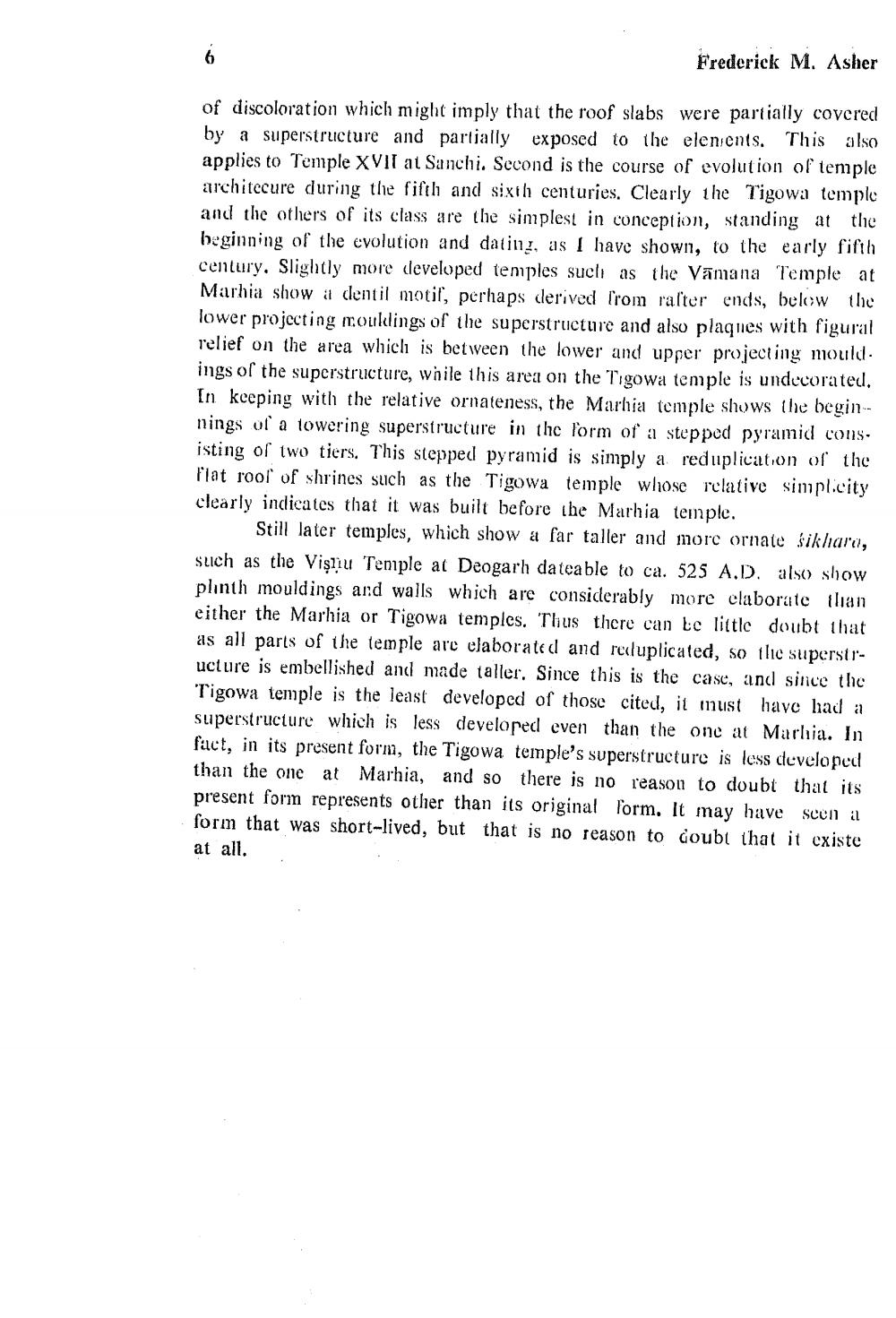Book Title: Sambodhi 1977 Vol 06 Author(s): Dalsukh Malvania, H C Bhayani, Nagin J Shah Publisher: L D Indology Ahmedabad View full book textPage 8
________________ Frederick M. Asher of discoloration which might imply that the roof slabs were partially covered by a superstructure and partially exposed to the elen ents. This also applies to Temple XVII at Sanchi. Second is the course of evolution of temple architecure during the fifth and sixth centuries. Clearly the Tigowa temple and the others of its class are the simplest in conception, standing at the beginning of the evolution and dating, as I have shown, to the early fifth century, Slightly more developed temples such as the Vāmana Temple at Marhia show a dentil motil, perhaps derived from raster ends, below the lower projecting mouklings of the superstructure and also plaques with figural relief on the area which is between the lower and upper projecting mould ings of the superstructure, while this area on the Tigowa temple is undecorated. In keeping with the relative ornateness, the Marhia temple shows the begin nings of a towering superstructure in the form of a stepped pyramid cons. isting of two tiers. This stepped pyramid is simply a reduplication of the flat rool of shrines such as the Tigowa temple whose relative simplicity clearly indicates that it was built before the Marhia temple. Still later temples, which show a far taller and more ornate sikliani, such as the Viştu Teniple at Deogarh dateable to ca. 525 A.D. also show plinth mouldings and walls which are considerably more claborate ilian either the Marhia or Tigowa temples. Thus there can be little doubt that as all parts of the temple are elaborated and reduplicated, so the superstructure is embellished and made taller. Since this is the case, and since the Tigowa temple is the least developed of those cited, it must have had a superstructure which is less developed even than the one at Marhia. In fact, in its present form, the Tigowa temple's superstructure is less developed than the one at Marhia, and so there is no reason to doubt that its present forin represents other than its original form. It may have seen a form that was short-lived, but that is no reason to doubt that it cxiste at all.Page Navigation
1 ... 6 7 8 9 10 11 12 13 14 15 16 17 18 19 20 21 22 23 24 25 26 27 28 29 30 31 32 33 34 35 36 37 38 39 40 41 42 43 44 45 46 47 48 49 50 51 52 53 54 55 56 57 58 59 60 61 62 63 64 65 66 67 68 69 70 71 72 73 74 75 76 77 78 79 80 81 82 ... 420
